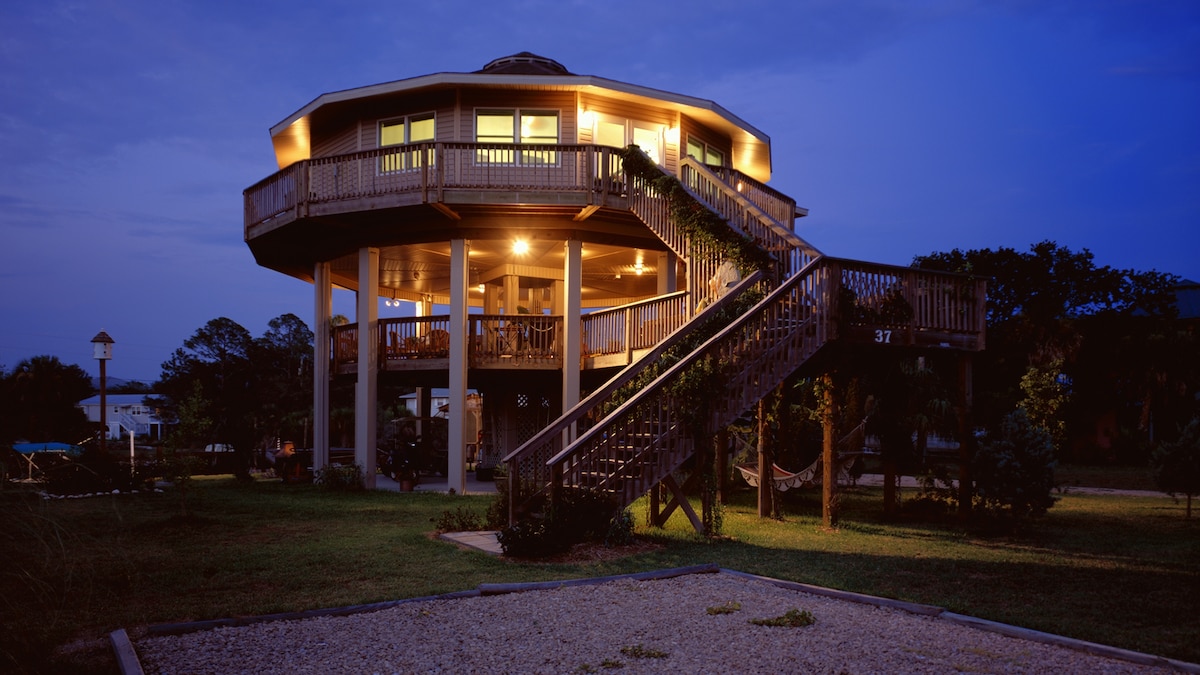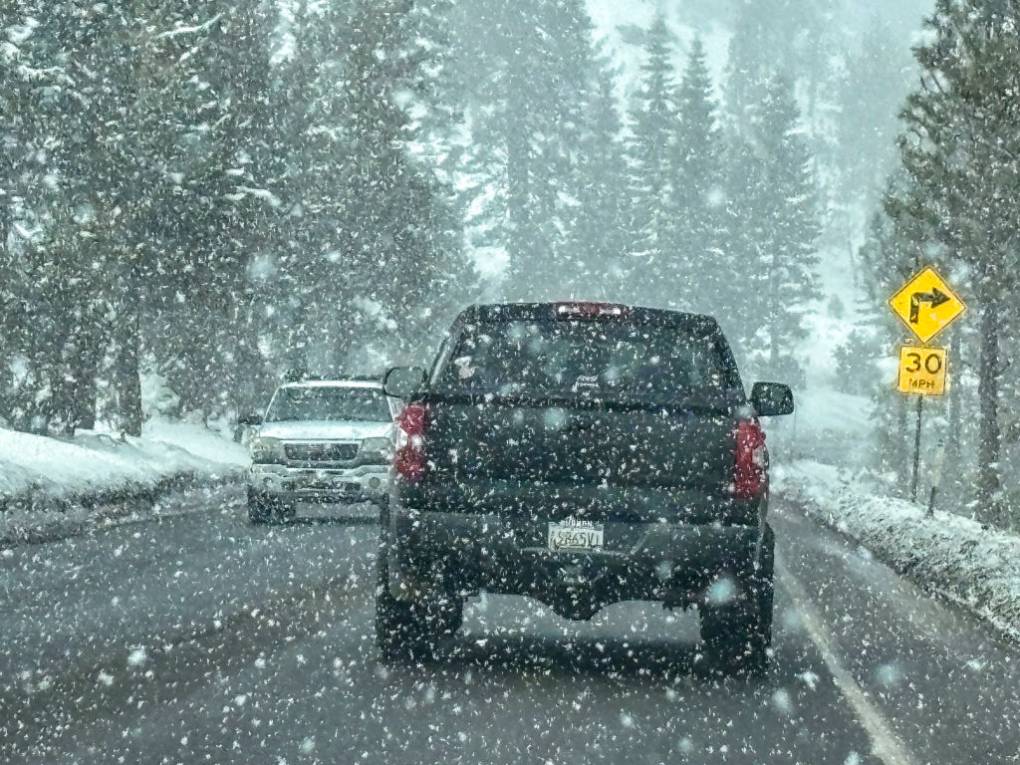
Gary Ledbetter lived in Paradise, California for 10 days before the 2018 Camp Fire burned through the town. The fast-moving wildfire was the deadliest in modern California history and the most destructive, claiming more than 18,000 structures—including Ledbetter’s home.
“It was reduced to concrete,” he remembers five years later. “All you saw was a fireplace.”
Paradise is located in a rural region of Northern California where fire has historically been part of the landscape and will continue to be a presence and potential threat. So, after making the difficult decision to rebuild on his land, Ledbetter made it his mission to learn about fire-resistant designs. He binged YouTube videos, pulled fire officials aside for informal chats, and researched building codes in the United States and abroad.
He identified fire-resistant materials for his walls and windows and created a five-foot noncombustible buffer zone around his house. Then, there were the small but critical details—for example, maintaining the benefits of that buffer meant he also couldn’t have flammable materials like a doormat at his front door.
It’s been a difficult and time-consuming process, Ledbetter admits. Looking out the window at the dramatic, sloping scenery that used to be obscured by trees, he says the effort has been worth it.
“I don’t want to have to build another house. I’m going to do this one time,” Ledbetter adds. “I want to be able to sleep at night, you know?”
Whether it’s wildfires or hurricane-force winds; flooding or extreme heat, volatile conditions driven by climate change are hitting home for millions of people like Ledbetter. According to the Urban Institute, weather-related disasters displaced more than three million people for some period of time last year. Pair that with a 2021 study from CoreLogic, which found about one in 10 U.S. homes were impacted by disasters, and it helps paint the picture of just how widespread the threat of extreme weather is on homes—and how much work needs to be done to prepare communities for the futures they face.
The good news is that experts broadly agree that resilient design and building codes have improved dramatically in recent decades. That information is helping the average person adapt their homes to an increasingly unpredictable climate future.
Learning from disaster
From the outside, Ledbetter’s sage green house looks fairly similar to the other new builds popping up across Paradise. But his attention to detail earned him the first Wildfire Prepared Home Plus designation from the Insurance Institute for Business & Home Safety (IBHS).
After the Camp Fire, researchers from government agencies, nonprofits, and other institutions combed through the wreckage in Paradise to understand why the wildfire was so devastating and to try to uncover the reasons some buildings survived.
(Orange, smoke-filled skies are the future. Here’s how to prepare.)
IBHS researchers used those observations to inform experiments at the non-profit’s sprawling research facility in North Carolina, where they can put full-scale buildings through the ringer, from showering them with fire embers to blasting them with hurricane-force winds. This allows researchers to recreate hazardous conditions, testing a variety of building materials and designs to see what survives.
The idea is: “I can’t stop the tornado, but we can narrow the impact of its effect,” Roy Wright, President and CEO of IBHS, says.
This hybrid approach of combining real-world disaster observations with lab-designed research has also helped researchers at Florida International University understand how to build homes that withstand hurricanes. Ioannis Zisis, a civil engineer, has subjected different types of buildings and transportation infrastructure like bridges to combinations of wind and rain. Using the University’s sprawling Wall of Wind facility, he can mimic the Cat 5 hurricanes they’ve seen in the state. He’s placed different combinations of roof tiles, windows, solar panels, and other regular home features in front of the massive set of a dozen whirring yellow fans to study how they hold up.
In many coastal communities, homes have been raised up on stilts to dodge floods and storm surge. When it comes to withstanding wind, though, Zisis says many of the safest improvements are not particularly noticeable, despite making a major difference.
New high-tech design
Popular examples of buildings that have been designed to survive disasters are often high-tech, like Apple’s Silicon Valley headquarters or Japan’s high-concept Skytree tower, both of which use a seismic isolation design to withstand the shaking of earthquakes. For homeowners, there are also hazard-focused builders focused on designing new structures around a specific risk.
The characteristically round buildings made by Deltec Homes promise an aerodynamic approach to absorbing hurricane-force winds, while the steel Q Cabins structures pledge to be fire-resistant and able to shoulder dozens of pounds of snow.
(This is what the world could look like inn 2070.)
However, experts stress that retrofitting existing buildings is a key—and often overlooked—component of making neighborhoods safer. Building codes evolve over time, and many older houses are more vulnerable than homeowners might understand, according to Evan Reese, co-founder and executive director of the U.S. Resiliency Council. Yet there are a number of lower-cost strategies that are proven to fortify homes, some of which require little to no contracted work.
Preparing for disaster season
When it comes to wildfires, creating a barrier like Ledbetter’s around a property, cleaning out your gutters, and covering vents with metal mesh will make homes less likely to ignite. To withstand wind, Zisis recommends making basic roof repairs or reinforcing those areas with metal connectors known as “hurricane straps.”
And making sure your home is well-insulated can also be a significant step towards protecting it from water, heat, and wildfire, providing a barrier against harsh outdoor conditions and temperatures.
For those who do find themselves dealing with disaster damage, an upcoming shift in Federal Emergency Management Agency policies is slated to make future resiliency retrofits more accessible. But Ledbetter urges others not to “roll the dice” and wait for the worst to start making changes.
“You’re going to miss those trees that were 20-feet from the house or three feet from the deck,” he says. “I love trees. I miss mine. But it’s going to get taken away from you anyway.”
Source: www.nationalgeographic.com



